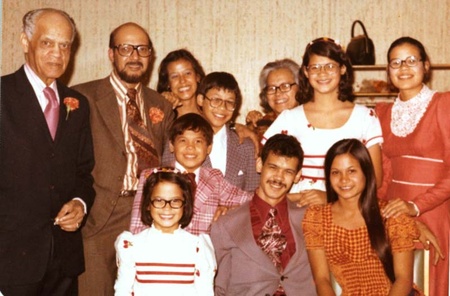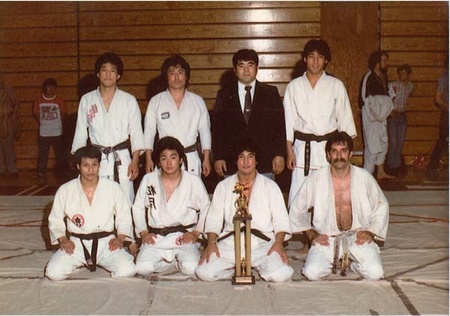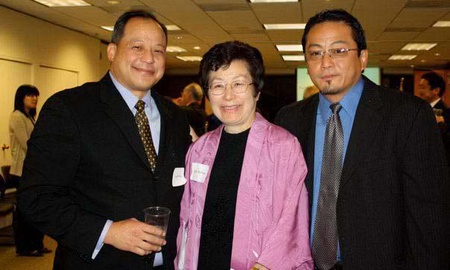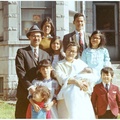>> Part 1
The summer after 4th grade, 1971, it was somehow decided that my older sister, my younger brother and I would become members of the local YMCA. We all took up swimming and judo. I really wanted to do Karate (in those days I don’t think there was any other martial art besides Judo and Karate) but those classes did not start until 8:00 pm. My grandfather dutifully walked us to and from the “Y”. I was not a bad athlete but not particularly gifted either. Kind of short and stocky, I was pretty shifty and strong but not particularly swift afoot. I had poor eyesight and eye-hand coordination but could play tackle football with the big boys. I wore “Husky” sized jeans. I took to judo like a duck to water and earned a yellow doing a rolling fall over the backs of seven kids and my orange belt for placing 2nd place at a tournament.
My Judo instructor was Jackie T., a black, plain clothes detective for the Chicago Police. He would arrive before class in a long leather trench coat, big afro, floppy hat, a .357 magnum in a shoulder holster, a colt.45 in his back belt and a .22 jet strapped to his ankle. A mix between Shaft and Superfly, he was a strict disciplinarian. Nobody messed with Sensei Jackie! I stuck with judo longer than either of my siblings but my youthful judo career ended with the arrival of my first girlfriend.
In the late 60’s and early 70’s the world seemed to change. The Blackstone Rangers were becoming a “problem” in the neighborhood and the Black Panther Party seemed to always be in the news. The University of Chicago had more squad cars than any suburban police force. My older sister went off to college. My older brother enlisted in the army and shipped off to Viet Nam as an Airborne Ranger.
In the early 1970’s a new TV series came on called Kung Fu. There had never been anything comparable since Kato on the Green Hornet. It was accompanied by what seemed to be an explosion of Kung Fu Cinema including Five Fingers of Death and Bruce Lee’s trio of Golden Harvest releases. All the sudden, it was cool to be Chinese! “Do you know Kung Fu?” neighborhood kids would ask, mostly inquisitively but sometimes menacingly. “He is a distant cousin but we have never met him” Roger and I would conspire. What was I supposed to do, my big sisters and brother were no longer around to protect me! The irony that the star, David Carridine is 0% Asian seemed to escape everyone.
But still, in public high school it was painfully obvious that people were more color conscious. Part of the segregation was based on cliques, the Rock musicians, the disco dancers, the Chorus singers, but the white kids pretty much separate from the black kids. Besides the crossover from the members of the Chess and Math clubs I somehow had the unique ability to “blend in”. Besides the kicker Todd (who of course kicked soccer style) I was the only non-black at the football team summer training. I was not the best swimmer but my senior year I was voted captain of the swimming team by an integrated but predominantly white team, I was not white--not black. It was cool. I could play both sides. My junior year I dated a Black Senior who was a Pom-Pom Girl. But I still spent most of my time with Roger and Jerry and a couple of other hang-out buddies.
When I got to college I decided to go back to Judo. I returned to Sensei Jackie T. at the YMCA. He welcomed me back warmly and put me through rigorous training. I remembered how to fall and quickly advanced to green belt winning some local tournaments. Soon after, the Hyde Park YMCA would close its doors. I bounced around the University of Chicago Judo Club and Hwa Rang Do, a mixed martial arts dojo near the University but neither was a competitive dojo. Through a mutual friend I came to meet Dean M. who I had seen compete at local Shiai but was ranked higher than me and thus had never fought. I was invited to a workout at MBC Judo Academy where Dean, Doug M., Doug T., Kevin C, Steve T. and Sensei Yoshinaga warmly welcomed me with the thrashing of a life time. One of my most vivid adult memories is afterward sitting in the dank, unfinished basement locker room, exhausted and struggling to peel off my soaked judo gi, watching the sweat vaporize and rise off my body. Finally-I had found my new dojo!
Largely through judo and the friendships formed at the dojo on the north side, I became introduced to the larger Japanese American community in Chicago. One night, Dean and I went by the Marigold Bowling Alley. It was “League night”. I had never seen so many Japanese Americans in one place at one time! Gradually, through Ginza, Kagami Biraki, and other festivals at various Buddhist Temples and other social outlets I came to experience and appreciate what is a vibrant and substantial culture within the Chicago community. It seems to me that the JA community in Chicago evolved out of the camp experience, and is driven by a traditional sense of ethics and distinct set of neurosis. Like the African American, Korean, Mexican or other communities, it has its own unique lexicon of idioms and expressions that persons outside the community would not understand.
I have been involved in Judo for about 35 years and have been promoted to Fifth Degree Black Belt (Godan). I cannot imagine my life without judo. It has been the source of many of my closest friends, I have met my accountant and my attorney through judo, I have been employed twice by judo associates, many of my most trusted confidants and mentors are from judo, my children’s godparents are from judo. It really has been a wellspring that has enriched my existence. It also provides me with life balance and a sense of accomplishment.
Summing it up what does it mean? I feel that my understanding of what is good and bad, right and wrong largely stems from my early childhood. My sense of what is interesting and boring, humorous and distasteful, beautiful and ugly, has been influenced by the persons and cultural experiences I have been exposed to. My persona has been shaped by more than my immediate environment in so far as my environment is itself an amalgamation of various cultures. Ethnically, I am a mixture of Japanese, Scottish, Cherokee and Blackfoot Indian, African American and French bloodlines. But that does not define who or what I am. It is my actions (or lack of), my accomplishments (and failures) and the meaningful contributions that I make to society that largely define who I am. That potential is largely determined by my family upbringing, by my friends and associates, by my craft and profession, by my environment in total. As I mentioned, I am the only male in the family who has not served in the military-I am also the only Godan. Except for a distant Uncle Shig on the Imoto side!
*This article was originally published in Voices of Chicago, online journal of the Chicago Japanese American Historical Society.
© 2010 Chicago Japanese American Historical Society







